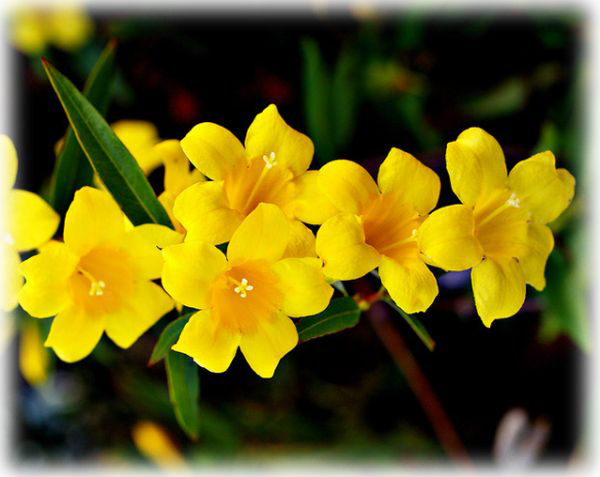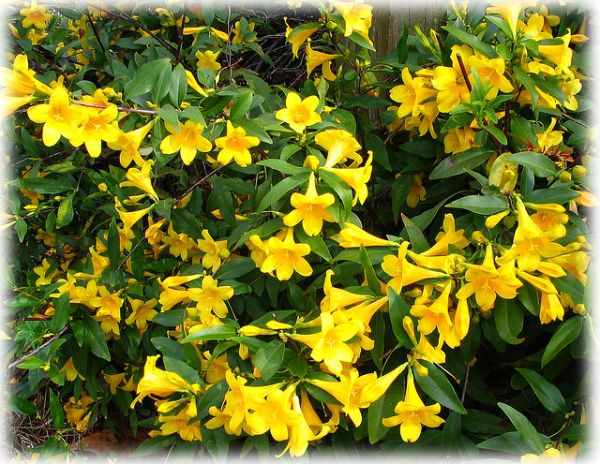
YELLOW JASMINE - "GELSEMIUM SEMPERVIRENS"
One of the South's most fragrant plants. Beautiful and easy to grow, yellow jasmine is a semi-evergreen climbing vine which blooms in early spring and again in the fall. The plant is known by several names, including Carolina jasmine, evening trumpetflower, yellow jessamine and its formal botanical name, Gelsemium sempervirens. Though it is lovely, all parts of the yellow jasmine plant are highly poisonous. The notion that the nectar from this plant poisons bees or contaminates honey is false. Bees are able to metabolize naturally occurring toxic nectars, into a safe food source for themselves and their brood. Read more about Green Chapels Bee Research here.
HISTORY:
The native Algonquin tribes of the Carolinas, made great use of this lovely plant. A tincture of the flowers in fermented fruit, was used to treat Malaria and other Fevers (or "Ague" from the Algonquin), a mosquito-born infectious disease. Malaria was a plague to early settlers in the Americas, into modern times, with the last case being reported in 1940. The Algonquins used their native medicines to survive diseases like Malaria for centuries, which speaks volumes to their effectiveness. The Algonquins also used Gelsemium Sempervirens as a weapon. They poisoned the water sources of their enemies, and administered a tea made from the leaves, to paralyze an enemy so that they might be tortured without losing consciousness.
In 2011, Gelsemium was used to poison and kill Chinese billionaire Long Liyuan. The plant was added to a stew by a disgruntled business associate. (Guangdong province)
GROWTH HABIT:
Yellow jasmine has fine, trailing tendrils which are easily trained up a trellis or other support. Individual vines can reach 15 to 20 feet in length within several years. New leaves appear just before the plant flowers. leaves darken to a bronze-green in winter. Leaves persist throughout the winter unless temperatures are unusually low.

http://www.wildthingsgrow.com/yellow-jessamine-gelsemium-sempervirens.html